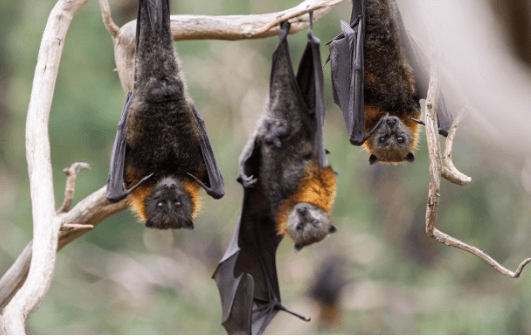Cute:-_Noi7qvbwi= Bat

The “Cute:-_Noi7qvbwi= Bat” presents an intriguing case for both ecological significance and aesthetic appeal. With its endearing features and remarkable social behaviors, this species not only captivates the observer but also plays a crucial role in its ecosystem. From its diverse habitat preferences to its varied diet, the implications of its existence extend beyond mere charm. As conservation efforts become increasingly vital, one must consider the broader consequences of losing such a unique creature. What challenges lie ahead for this bat, and how can we ensure its survival in a changing world?
Unique Features of the Cute:-_Noi7qvbwi= Bat
Although often overlooked due to their nocturnal nature, Cute:-_Noi7qvbwi= Bat possess a remarkable array of unique features that distinguish them from other mammals.
Their exceptional echolocation abilities enable them to navigate and hunt in complete darkness, showcasing an evolutionary adaptation to their environment.
Read More Clipart:1nk-3sbrhzs= Jars
Coupled with their diverse morphological traits, bats exemplify the intricate balance of adaptation and survival in a nocturnal lifestyle.
Habitat and Environment
Cute:-_Noi7qvbwi= Bat inhabit a diverse range of environments, from tropical rainforests to arid deserts, demonstrating their remarkable adaptability to varying ecological niches.
Their roosting habits, often involving caves, trees, or man-made structures, are crucial for survival.
However, habitat loss due to urbanization and deforestation poses significant threats, disrupting these essential roosting sites and jeopardizing bat populations worldwide.
Conservation efforts are vital for their preservation.

Diet and Feeding Behavior
A diverse array of feeding strategies characterizes the diet of Cute:-_Noi7qvbwi= Bat, reflecting their ecological versatility and adaptability.
These species exhibit varied dietary preferences, from insectivorous to frugivorous habits, each tailored to meet their specific nutritional needs.
Their foraging strategies, whether gleaning or hawking, underscore the importance of habitat diversity in supporting their feeding habits, ultimately influencing their survival and ecological roles.
Conservation Efforts and Importance
Effective conservation efforts are crucial for maintaining bat populations, which play significant roles in various ecosystems.
Read More Clipart:1dlbi1rh7si= Checks and Balances
Implementing targeted conservation strategies enhances their survival and addresses threats such as habitat loss and disease.
Bats contribute to ecological significance through pest control, pollination, and seed dispersal.
Understanding these dynamics fosters appreciation for their roles and reinforces the necessity of protecting these vital species for future ecological balance.
Conclusion
In summary, the cute:-_noi7qvbwi= bat emerges as a vital component of its ecosystem, harmonizing the intricate web of life through its roles in pest control and pollination. With its charming demeanor and remarkable adaptations, this species exemplifies the delicate balance of nature. Conservation initiatives serve as the lifeline for this enchanting creature, ensuring its continued presence in diverse habitats. Protecting the cute:-_noi7qvbwi= bat is not merely an act of preservation; it is a commitment to safeguarding biodiversity itself.




